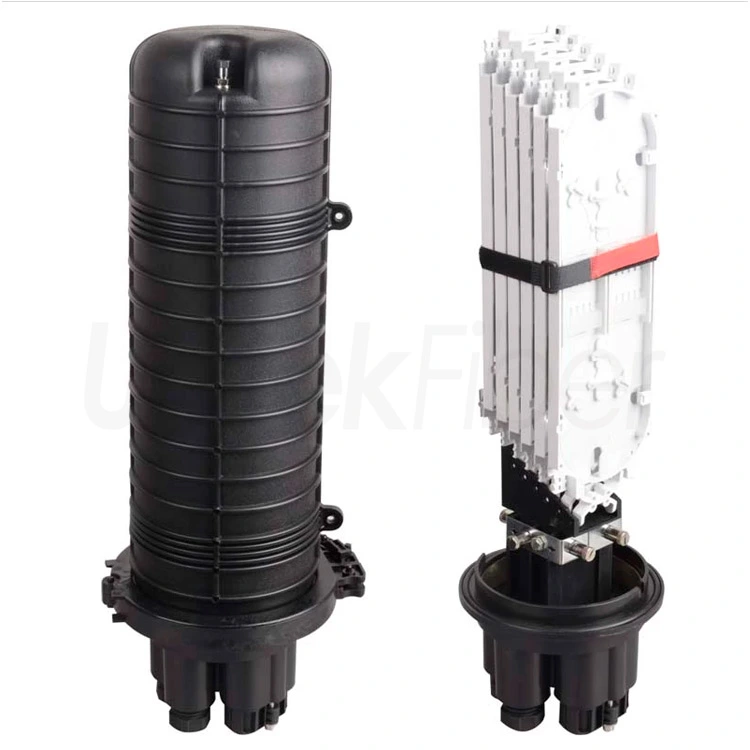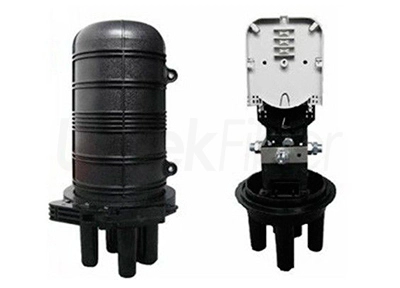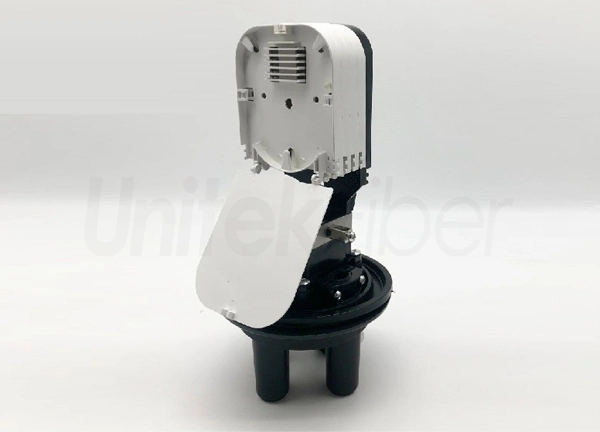
Fiber optic closure, also referred to as fiber optic splicing closure, are essential devices utilized to create a secure and protected environment for spliced fiber optic cable. These fiber optic closure facilitate the connection and storage of optical fiber, whether in outdoor installations or indoor buildings. With their robust mechanical strength and durable outer shells, fiber optic closure ensure that the fiber optic cable are safeguarded from harsh environmental conditions. With a wide range of options available in the market, selecting the right fiber optic closure can be a daunting task. In this blog, we will provide a comprehensive guide to help you understand the fiber optic closure types and the key factors to consider when choosing fiber optic closures for your specific applications.
The vertical type fiber optic closure is designed to be installed on a pole or wall mount, and the fiber optic cable enter and exit from the top and bottom of the fiber optic closure. It features a circular design that provides easy access to the fiber optic cable inside. The fiber optic closure is usually made of high quality ABS material that is resistant to harsh weather conditions and UV radiation. It is suitable for aerial applications.
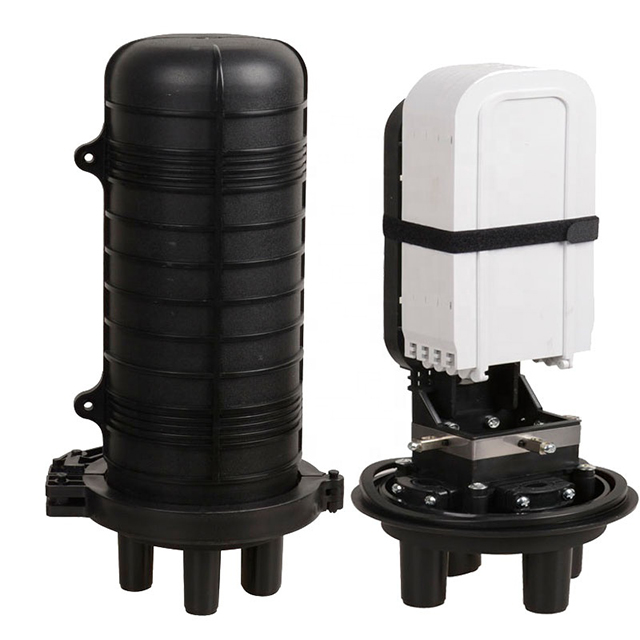
The horizontal fiber optic closure is designed to be installed underground and can be used for direct buried or duct. The fiber optic cable enter and exit from both ends of the fiber optic closure. It features a rectangular shape that can be easily placed in a trench or buried underground. The fiber optic closure is also made of high quality ABS material that is resistant to harsh weather conditions and UV radiation.
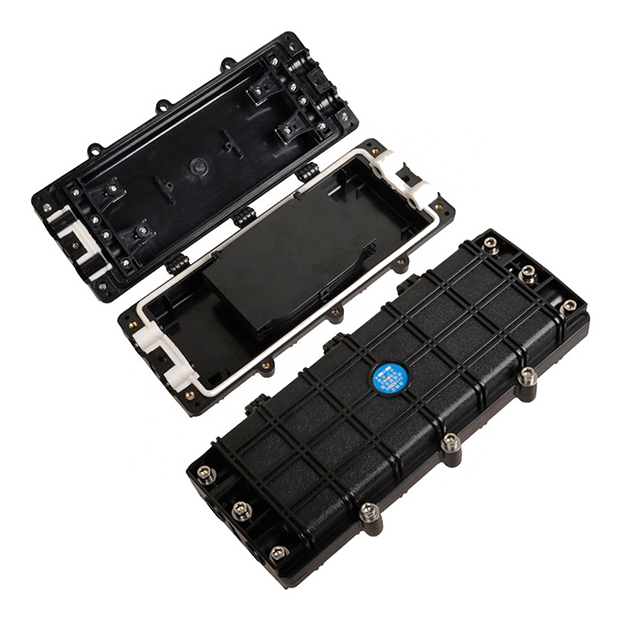
Capacity and Size
The capacity and size requirements of your fiber optic network will determine the type of fiber optic enclosure you need. Consider the number of fiber optic cable, splice tyays, and fiber optic connector that need to be accommodated. Choose a fiber optic closure that offers sufficient space and flexibility for current needs as well as potential future expansions. Options include dome fiber optic closure and inline fiber optic closure, each offering different capacities and installation methods.
Optical Splice Tray Configuration
Optical splice trays are an integral part of fiber optic closures as they provide a secure and organized platform for managing fiber splice tray. Evaluate the fiber splice tray configuration options offered by different fiber optic closure. Look for fiber optic closure that provide ample space for splicing optical fibers, easy access to individual splices, and efficient optical cable management. Some fiber optic closure offer modular trays that can be customized to accommodate various types of fiber optic connectors.
Fiber Optic Cable Entry and Exit Points
Consider the number and types of optical cable entry and exit points required for your specific installation. Look for fiber optic closures that offer multiple entry and exit ports to facilitate optical cable routing and allow for future expansions. Different fiber optic closure employ various sealing mechanisms, such as grommets, heat shrink sleeves, or mechanical seals, to maintain the integrity of optical cable entry points and protect against environmental factors.
Maintenance and Accessibility
Ensure that the chosen fiber optic closure provides convenient accessibility for routine maintenance, troubleshooting, and expansion. Look for fiber optic closures with hinged or removable covers, secure latch systems, and adequate working space inside the fiber optic closure. Easy access to individual optical fibers, splice tray, and fiber optic connector will save time and effort during maintenance activities.
Selecting the right fiber optic closure is crucial for ensuring the protection, organization, and long-term performance of your fiber optic network. By considering capacity requirements, splice tray configuration, optical cable entry and exit points, and accessibility, you can make an informed decision.
UnitekFiber as a reliable fiber optic products supplier, offers a wide selection of high quality fiber optic closures suitable for various applications. In addition, UnitekFiber offers other fiber optic cable management products, such as optical closure. For further assistance or inquiries about our fiber optic closure solutions, please contact us at sales@unitekfiber.com.

